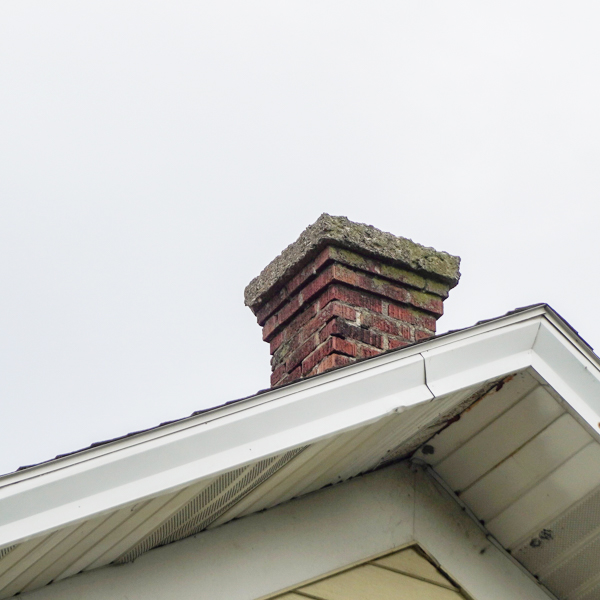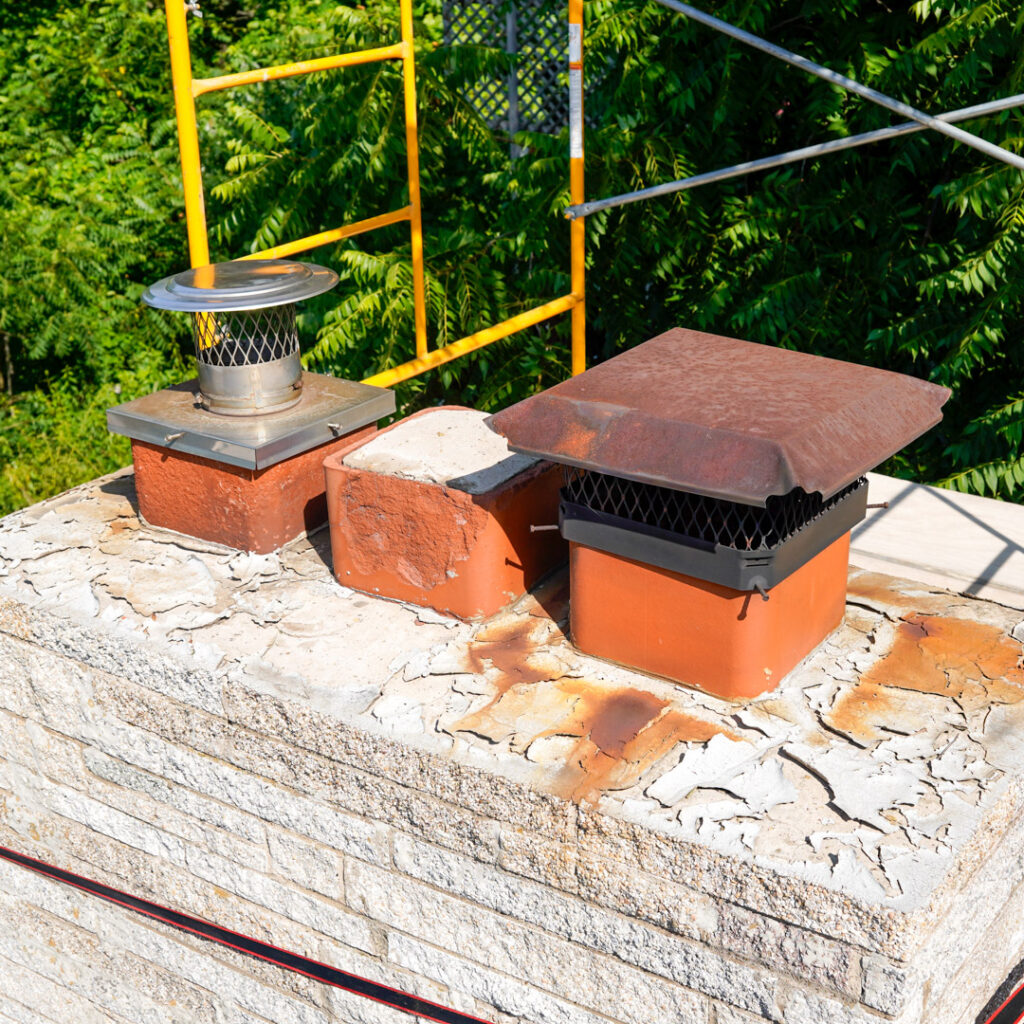Detecting Chimney Leaks: Effective Methods
As the most prominent feature and highest point of your home, your chimney is exposed to the elements. Year after year, cold and snowy winters followed by warm, wet, and muggy summers cause the brick and mortar to deteriorate. Eventually, the chimney springs a leak. Since a chimney is literally built with over a ton of bricks, finding the leak can be like trying to find a needle in a haystack. However, if left unattended, chimney leaks can lead to structural damage, mold growth, and even fire hazards. So, if you believe water is getting inside the structure, it’s crucial to address it promptly. Here are some effective methods for detecting chimney leaks.
 Areas Most Vulnerable to Chimney Leaks
Areas Most Vulnerable to Chimney Leaks
Water can enter the chimney from practically any point. However, the following areas and components are most prone to damage from the elements.
- Chimney Cap/Rain Cap
- Chimney Crown
- Flashing
- Missing or Cracked Mortar Joints
- Spalling or Missing Bricks
- Vents/Connector Pipes
Common Signs of a Leaky Chimney
As mentioned earlier, detecting a chimney leak is not always easy. However, it is imperative to find it and repair it quickly and correctly. You can use the following as a guide to help you determine where the moisture intrusion may be occurring:
Puddle in the Fireplace
The most direct evidence of a severe leak is rain or snow falling into the firebox. It is typically due to a damaged or non-existent chimney or flue cap.
Damp Walls/Ceilings Near the Chimney
Look for water stains, discoloration, or peeling paint on the ceiling or walls adjacent to or directly below the chimney. These are signs of a potential leak from flashing damage.
Musty Odor
A damp, earthy, or mildew smell often indicates moisture and mold growth inside the chimney or firebox.
Rust
Rust on the metal parts inside your fireplace, like the damper, is a clear indication of a persistent moisture issue.
White Stains (Efflorescence)
These powdery white deposits on the brickwork are the salts rising to the surface when water penetrates deep into the pores of bricks. It is often the first sign that your masonry is absorbing moisture. It typically washes away when it rains, reappearing after the masonry dries.
Loose or Spalling Bricks
Crumbling or flaking brick faces are a symptom of long-term water damage, typically caused by repeated exposure to freeze-thaw cycles. It requires urgent repair to prevent further damage that could result in a partial or complete chimney collapse.
How to Detect Chimney Leaks
Finding the source of a chimney leak requires a thorough investigation. Starting from the top down, here are the most effective methods of finding the source of the leaks. Keep in mind that moisture intrusion can occur in multiple areas, so a professional chimney inspection is necessary to ensure all potential issues are identified.
Check the Chimney Cap
Inspect the cap at the top of the chimney to ensure the mesh screen is intact and the cap is securely in place. A missing or damaged cap allows rain and snow to fall directly into the fireplace, potentially causing damage.
Examine the Chimney Crown
Visually inspect the crown for hairline cracks, chips, or deterioration. If you notice cracks, water can leak internally.
Inspect the Flashing
While on the roof, check the metal flashing for any gaps, rust, bent sections, or areas where the caulking/sealant has dried out, pulled away, or cracked. It is a frequent source of leaks.
Check the Masonry (Bricks/Stones and Mortar)
Look for deep, wide cracks in the mortar joints. Use a hose to lightly spray a section of the chimney for a few minutes (while monitoring inside) to see if you can spot the leak (start low and work your way up).
Flue Inspection
Look up the flue with a bright flashlight (or use a camera) for water trails, efflorescence, or signs of deterioration in the flue liner.
Targeted Water Test
If signs indicate a specific area (such as the flashing), isolate the water source. Cover all areas except the one you want to test and spray water with a hose. If the leak starts inside, you’ve found the general location. This method requires a helper to be present inside the home.
The above information is for educational purposes only. Chimney leak detection and repairs should only be performed by a certified chimney professional. A certified professional has the knowledge, experience, and tools to accurately diagnose and repair chimney leaks, ensuring the protection and integrity of your chimney and home.

Certified Chimney Inspections and Leak Detection Near Me
If you suspect a chimney leak, locating the source to stop the leak is imperative to prevent structural damage to the stack and internal components. With over five decades of experience, Wells & Sons has been Lehigh Valley’s most trusted provider of chimney and fireplace services, including inspections and leak detection. As a family-owned and locally operated business, we proudly serve eastern PA, including Palmer Township, New Smithville, Ironton, Pennsburg, and surrounding townships. Contact us today to schedule an appointment at https://wellssons.com/scheduling/.






 Areas Most Vulnerable to Chimney Leaks
Areas Most Vulnerable to Chimney Leaks

